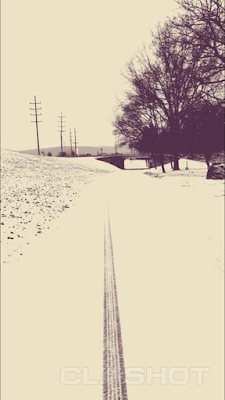Photo by Kelly Reilly
This is the image I posted to Clashot. I chose to sign up and upload an image to Clashot. I think this is a neat way to upload my own photos, yet be able to see what other people are taking photos of nearby me and around the world.
I believe photographs can change the world. A photograph can show so much in one image. While looking at a photograph people can see so many emotions, feelings, and also see how other people live or other parts of the world they have not been too. A photograph can change the world by people seeing the hurt and the darkness in the world. Many people do not know what it is really like at war or in third world countries. By seeing photographs of these things can make an impact on how people see the world and may want to help with these issues. As Jonathan Klein said in his speech, “…since the beginning of photography, images have provoked reactions in people, and those reactions have caused change to happen.” Also, a photograph can show the beauty in the world. You do not know how beautiful any place can be until you see it, and many times that is from a photograph. Photographs can also change the world by capturing an image that can change history. The photographer has their own story just as the image they are capturing.
Signing up to Clashot makes me want to take more photos and upload them, maybe they are good and I will get some money someday for it! By knowing what I know now from taking this class I will be able to enjoy what other people post on Clashot.
Photo by Tim Hetherington
Photo by Stephanie Sinclair
Photo by
Photo by Ruth Orkin
Image Source: http://www.libreriaipzs.com/Catalogo/Novit%C3%A0/82/
These are just a few of images that made an impact to me. In each, there is so much emotion, they are so powerful and tell so much of a story. They are from different parts of the world, shows different events that are happening in the world, in places I will probably never go.
Photo by Mathew Brady
Image Source: http://www.mcmahanphoto.com/bradyphotos.html
I learned that Mathew Brady was the first photojournalist. He took photos of the Civil War. He showed a lot of death. Also, he showed people back home what was happening during war, and also took photos before their loved ones left so they had something to remember them by.
Photo by Andrea Lucado
Image Source: http://www.webhostingsecretrevealed.net/blog/blogging-tips/graphics-is-not-my-thing-part-1-take-better-photos/
I learn what Rule of Third is and how I can spot it on a photo. That the subject is not in the middle of the frame, it is off center. Also if you divide the photo into thirds the main subject will be in one of the thirds.
Photo by Tina Modotti
Image Source: http://www.artnet.com/galleries/throckmorton-fine-art/
I also learned that women have been compared to men since we were created. I learned it was hard to women to become photojournalist and got criticized by their male co-works and they would mess around with them and their photos. I learned women have been taking photographers ass long as men have, and they will not stop for anyone. If they love to take photos, they will continue doing so and won't let anyone or anything get in their way.








No comments:
Post a Comment